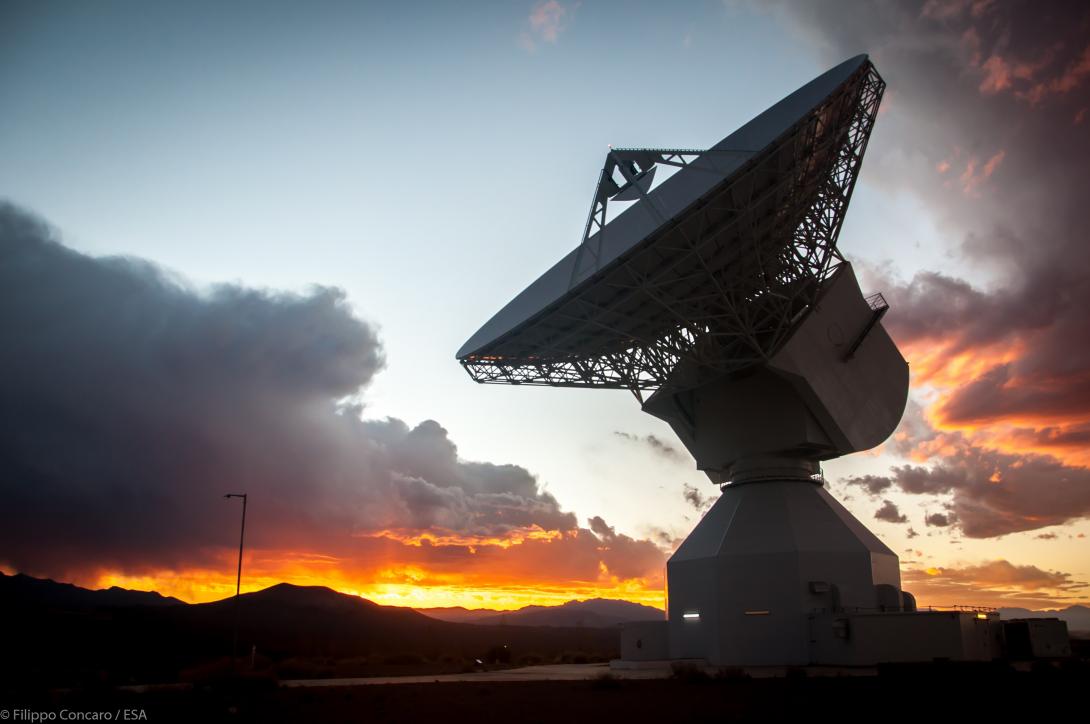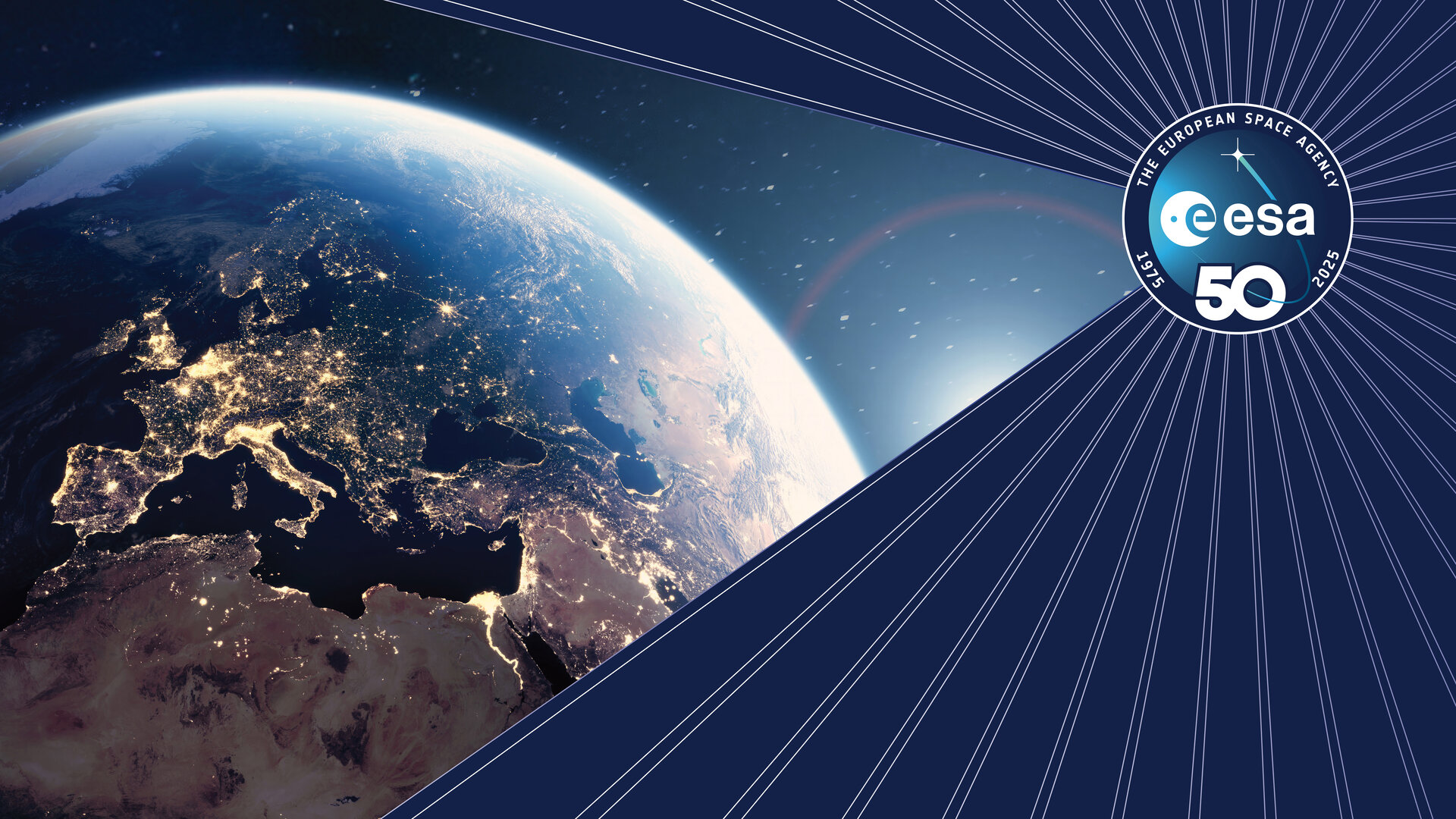Whatever the weather – operational weather forecasting for deep-space communication
A freak summer storm strikes central Spain. 77 kilometres west of Madrid, at ESA’s Cebreros satellite tracking station, wind and rain lash the giant 35-metre antenna. The connection to the distant spacecraft is lost. Important scientific data on Mercury’s magnetic field will be delayed.
“For signals travelling many millions of kilometres to Earth from distant worlds, it can be the last few kilometres within our atmosphere that are the most dangerous,” says Ground Station System Engineer Maria Montagna.
Maria is currently leading a project that aims to implement a new weather forecasting system for ESA’s deep-space communication antennas that would warn of any adverse conditions for radio communication in the next 12 hours and help prevent this situation.
Maximising data return
No space mission lasts forever. To get the most out of a mission such as the ESA/JAXA BepiColombo, mission to Mercury, it is important to maximise the amount of science data it returns to Earth. Ka-band radio communications at a frequency of approximately 32GHz will be particularly important for receiving science data from BepiColombo, but they are adversely affected by poor weather conditions.
The team from ESA’s ESOC mission operations centre and their partners are investigating the possibility of using ‘operational weather forecasting’ at ESA’s Cebreros station in Spain and Malargüe station in Argentina to improve the science data return of the BepiColombo mission once it arrives at Mercury in 2025.
The rain in Spain is mainly a pain
The amount of data that can be returned to Earth from a spacecraft is limited by ‘noise’. Noise makes it impossible to tell the difference between real data and other unwanted sources below a certain signal strength. The better the ‘signal-to-noise ratio’, the more data you can return to Earth in a given time.
This signal-to-noise ratio is impacted by a number of things: signals from spacecraft attenuate (weaken) as they pass through Earth’s atmosphere and interact with its particles. The atmosphere also produces more noise the warmer it is, with clouds being warmer than clear blue sky.
“The atmosphere both weakens the signal and increases the noise,” says Marco Lanucara, Head of the System and Project Support Section within the Ground Stations Systems Division at ESOC. “These effects collaborate to destroy our data!”
Rain can also disrupt or even kill the link between the station on Earth and the spacecraft, while strong winds can cause the antenna to wobble. When the signal beam is as narrow as it is for Ka-band satellite communication, even a little wobble can disrupt the connection.
How can operational weather forecasting help?
The impact of atmospheric and weather conditions on radio communications are well understood. At antenna stations around the world, operators use a record of the local weather stretching back decades to predict the signal and noise conditions for upcoming communication windows. With this, they work out how much data they can expect to receive during the window. But these estimates currently rely on broad weather patterns rather than real-time conditions.
In this project, the team are attempting to establish an operational, local, weather service that provides a direct forecast of how weather conditions will affect deep-space communication in the next 12 hours.

The team receives weather forecasts from the European Centre for Medium-Range Weather Forecasts (ECMWF) and National Centers for Environmental Prediction (NCEP) twice per day. But this raw forecast data is in the form of precipitation, temperature and other features, and is provided on geographical scales too large to be immediately useful.
So, they developed a new computational pipeline that automatically converts the raw weather data into a localised forecast that focuses specifically on the impact on radio communications in the few square kilometres around the antenna sites at Cebreros and Malargüe and determines how current these weather conditions will impact radio signal propogation.
“Our predicted signal-to-noise ratio is tuned to the actual atmospheric conditions, rather than average or worst-case atmospheric conditions from historic weather data,” says Maria. “With this, we can help antenna operators calculate which data rate they can expect and therefore how long they will need to communicate with their spacecraft in order to receive all the data they need to.”
“We can also provide more accurate advance warnings of adverse weather conditions and their impact on deep-space communication, and even suggest that they delay their communication or use another antenna elsewhere if possible.”
What next?
The project is currently at an early, pre-operational stage and is being trialled between BepiColombo and ESA’s Cebreros and Malargüe stations. The team are currently feeding the results of the tests back into the system to improve it. Was the weather forecast correct? Can the models for signal attenuation be improved? Was the local wind data taken into account properly?
The ultimate aim would be to provide a first-of-its-kind operational service to any mission supported by ESA’s deep-space network that provides on-board and ground link configuration, optimised based on the weather conditions expected during the pass. It would also automatically send alerts to spacecraft operators to warn of any potential communication disruption at the antenna stations in the coming 12 hours.
The team will present the results of this activity at the “9th ESA International Workshop on Tracking, Telemetry and Command Systems for Space Applications (TT&C 2022)” in The Netherlands at the end of November and at SpaceOps 2023 in Dubai next March.



